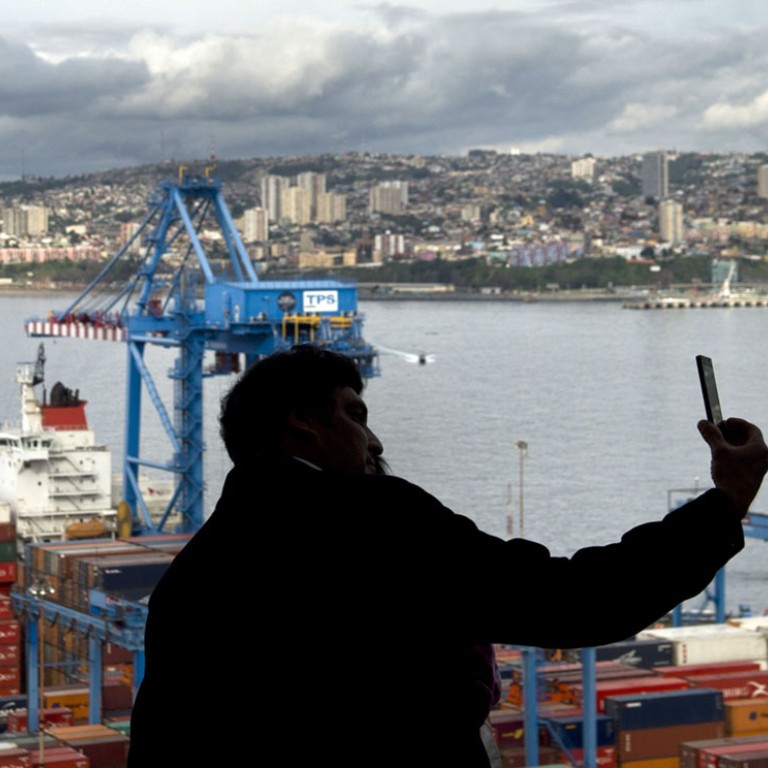
Chile seeks more Chinese investment
Annual export and import flows between China and Chile are growing at more than 20 per cent
Chile, which counts China as its biggest export destination thanks to a brisk trade in copper, fruit, wine and seafood, is seeking to boost Chinese investment, particularly on infrastructure and energy projects.

Chinese exports to Chile more than quadrupled to US$13 billion last year, while Chile's exports to China more than tripled to US$20 billion in the same period, according to the World Trade Organisation's International Trade Centre. The average annual growth of both flows exceeded 20 per cent.
Some 85 per cent of Chile's exports to China are copper and iron ore and related semi-processed minerals.
But China provided less than US$1 billion of foreign direct investment to Chile last year out of the South American country's total FDI of US$22 billion. That is partly to do with the distance between the two nations and China's lack of familiarity with Chile's business environment.
"We are expecting to see a new wave of Chinese investment in our country, after China Construction Bank was fully licensed to operate in Chile since the second quarter of this year," Jorge Pizarro Cristi, executive vice-president of Chile's foreign investment committee, told the .
"We received many company executives from China who are exploring investment opportunities in sectors like mining, infrastructure, services and manufacturing ... we are confident the investment figures will be completely different in three years."
Cristi said some US$10 billion worth of toll roads, highways, bridges, public buildings, dams, ports and airports projects would be tendered in the next six years. Some of the biggest projects include the US$1.82 billion, 20km Santiago central highway, the US$633 million expansion of Santiago's airport and the US$387 million Punilla dam for irrigation and power generation.
Its mining industry also needs US$10 billion worth of services and supplies annually, which Cristi said would present ample opportunities for mainland firms to provide construction, logistics and engineering services.
The South American nation is also seeking investors for power generation and distribution projects to meet rising demand and enhance energy security and distribution efficiency, especially in clean energy.
Chile generated 43 per cent of its electricity from hydro energy, 52 per cent from fossil fuel, and 5 per cent from renewable energy like wind and solar, according to the nation's largest electric utility Endesa Chile.
The Chilean National Commission of Energy has forecast the nation's power demand to rise 64 per cent between this year and 2025, or an annual average of 4.6 per cent. The mining industry accounts for about 35 per cent of total demand.
A law passed last year required at least 20 per cent of Chilean electricity output to come from renewable sources by 2025, up from 6 per cent last year.
Cristi said Chile's arid north has some of the world's richest solar resources, while its 4,000km of coastline provides ample wind, tidal and geothermal energy resources.
Meanwhile, Diego Torres, the head of the Asia and Oceania department at the Directorate General for International Economic Affairs at Chile's foreign ministry, said China and Chile were seeking to dismantle non-tariff barriers after the latest tariff reductions under the FTA take effect from next year. "The resolution of non-tariff barriers is crucial to Chilean exporters as it will let us diversify our exports to China," he said.
The two nations signed supplementary agreements on services trade in 2010 and on investments in 2012. An FTA between Hong Kong and Chile, signed in 2012, will also take effect next month.

